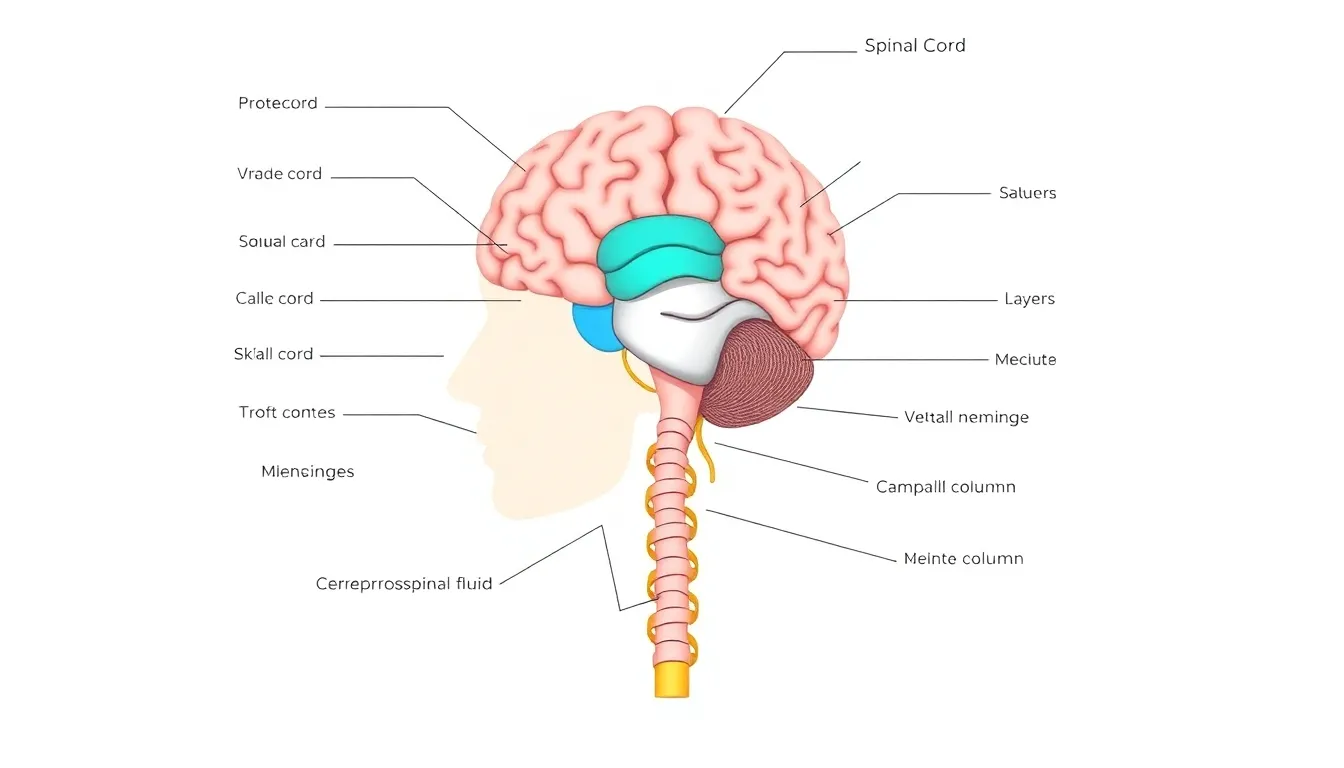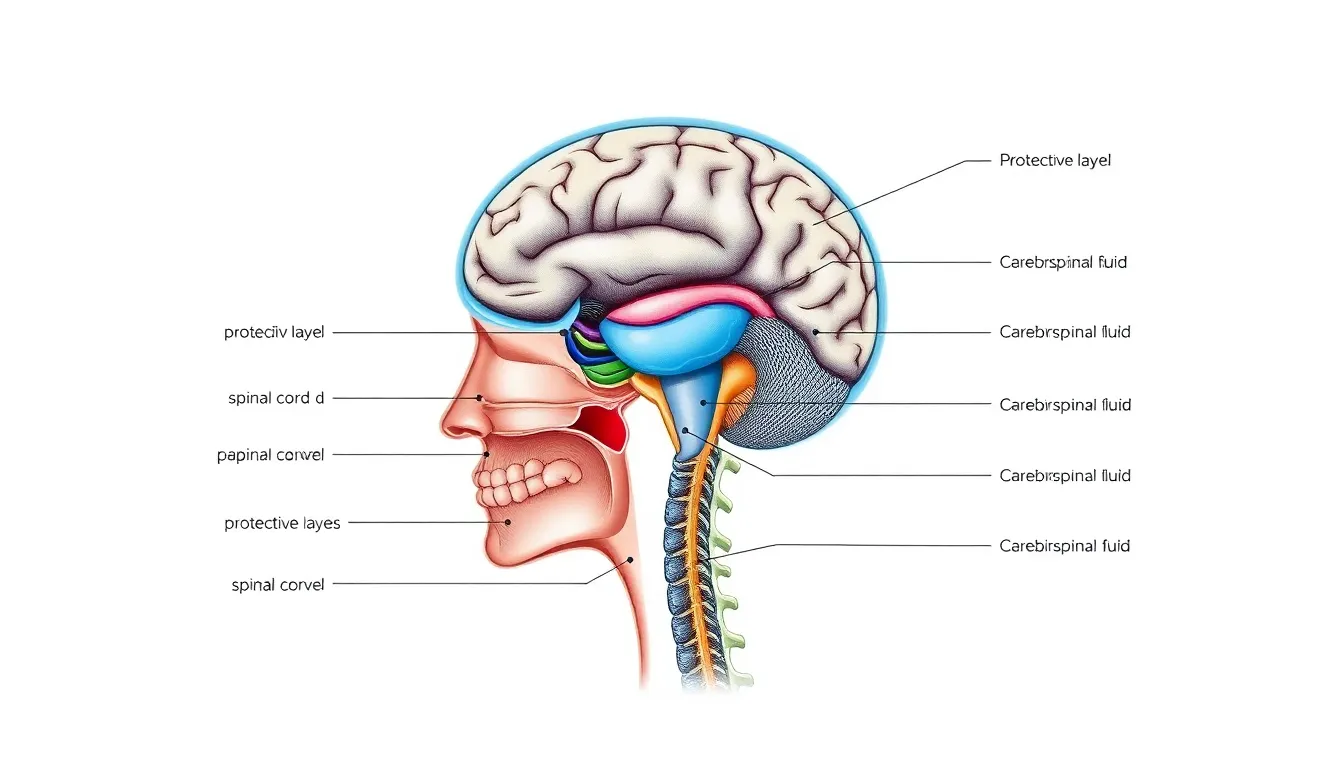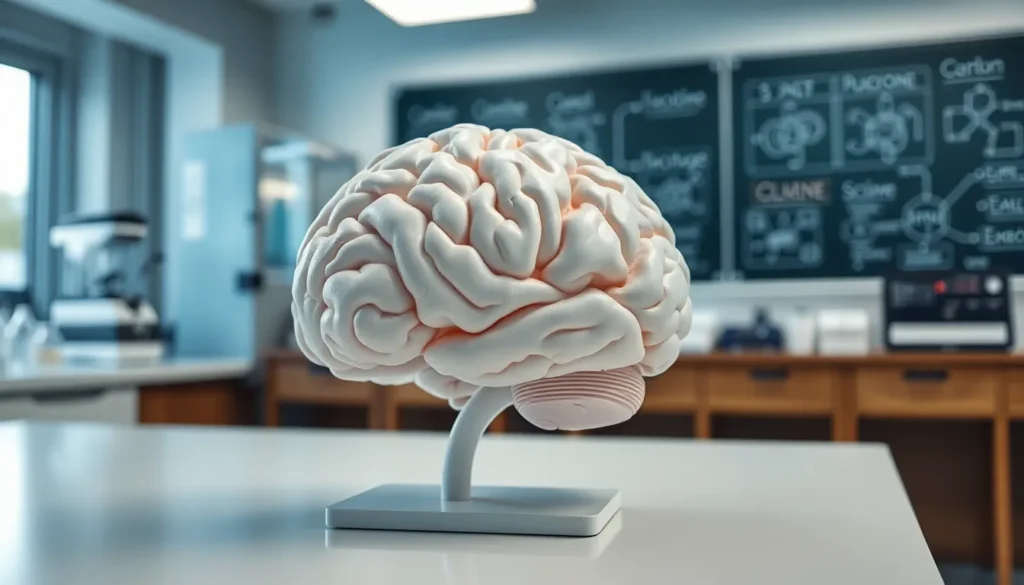Table of Contents
ToggleThe central nervous system, or CNS, is like the control center of a high-tech spaceship—except instead of navigating through the stars, it’s managing everything from the simplest reflexes to complex thoughts. It’s a bustling hub of activity where the brain and spinal cord work overtime to keep the body functioning smoothly. Without this intricate system, well, let’s just say that walking, talking, and even remembering where you left your keys would be a whole lot trickier.
But don’t let the serious name fool you; the CNS has a personality of its own. It’s the ultimate multitasker, juggling signals and responses faster than a caffeinated octopus. Dive into the fascinating world of the central nervous system and discover how this remarkable network keeps us connected, coordinated, and occasionally confused.
Overview of the Central Nervous System
The central nervous system (CNS) serves as the command center of the body. It consists of two major components: the brain and spinal cord. The brain processes information while the spinal cord acts as a conduit, transmitting signals between the brain and body.
Various structures within the brain perform specific functions. The cerebrum governs voluntary activities, memory, and learning. The cerebellum coordinates balance and motor skills. The brainstem regulates autonomic functions, such as heart rate and breathing.
Neurons represent the fundamental units of the CNS. These cells transmit signals through electrochemical impulses, allowing communication between body parts. Synapses occur between neurons, facilitating information transfer through neurotransmitters.
Protective layers surround the CNS. The skull encases the brain, while the vertebral column safeguards the spinal cord. Meninges, three protective membranes, envelop both the brain and spinal cord. Cerebrospinal fluid cushions the CNS and provides nutrients.
Functions of the CNS extend beyond reflexes. It influences emotions, thoughts, and decision-making processes. Cognitive abilities correlate directly with the brain’s complexity and activity. As a result, any impairment can significantly affect overall bodily functions and behavior.
Neuroplasticity represents a remarkable feature of the CNS. This ability allows the brain to reorganize and adapt in response to experiences and injuries. Rehabilitation strategies often leverage neuroplasticity to facilitate recovery.
Studying the CNS reveals its remarkable intricacies. Understanding how the brain and spinal cord interact enhances knowledge of human behavior and health. As research progresses, insights into the CNS will continue to inform medical and psychological practices.
Structure of the Central Nervous System


The central nervous system consists of intricate components that work in harmony to manage bodily functions and responses. Understanding these fundamental parts aids in comprehending how the CNS operates.
Major Components
The brain serves as the command center, processing sensory information and controlling voluntary activities. Comprised of several regions, it includes the cerebrum, which handles higher-order thinking and memory, the cerebellum, responsible for balance and coordination, and the brainstem, which regulates essential autonomic functions such as heart rate and respiration. The spinal cord acts as a critical communication pathway between the brain and the rest of the body, facilitating signal transmission. Neurons within these structures enable rapid information processing, connecting various regions for effective decision-making and responses.
Protective Mechanisms
The CNS is safeguarded by several mechanisms. The skull shields the brain, while the vertebral column protects the spinal cord. Surrounding these structures are three layers of membranes called meninges. These membranes provide additional protection against physical shock and infection. Cerebrospinal fluid circulates within these layers, offering cushioning and nourishment. This fluid also removes waste products from the brain, making it essential for maintaining overall CNS health. Together, these protective features ensure the CNS remains functional and safe from external threats.
Functions of the Central Nervous System
The central nervous system (CNS) plays a vital role in processing and responding to information from the environment. Its functions can be categorized primarily into sensory processing and motor control.
Sensory Processing
Sensory processing involves receiving and interpreting input from various sensory organs. The CNS analyzes signals from vision, hearing, touch, taste, and smell, helping to create a cohesive perception of the world. Special neurons transmit information from sensory receptors to the brain. The thalamus acts as a relay station, directing signals to appropriate brain regions for interpretation. For example, the occipital lobe processes visual data, while the temporal lobe handles auditory information. The integration of these inputs allows for swift and appropriate responses, crucial for interactions with the environment.
Motor Control
Motor control manages muscle movements necessary for both voluntary actions and reflexes. The primary motor cortex in the cerebrum sends signals to various muscles, coordinating movements throughout the body. The cerebellum fine-tunes these movements for balance and precision. Pathways within the spinal cord also play a critical role by transmitting signals from the brain to peripheral nerves. For instance, in response to sensory stimuli, a quick reflex occurs when the spinal cord initiates a movement before the brain fully processes the input. The intricate collaboration between these components enables smooth and effective locomotion and everyday tasks.
Central Nervous System Disorders
Central nervous system disorders significantly affect various bodily functions and can have profound impacts on overall health. These disorders stem from issues in the brain and spinal cord, leading to neurological impairments.
Common Conditions
Common conditions include multiple sclerosis, epilepsy, and Alzheimer’s disease. Multiple sclerosis affects nerve fibers, causing communication breakdown between the brain and body. Epilepsy leads to recurring seizures due to abnormal brain activity. Alzheimer’s disease results in memory loss and cognitive decline, impacting daily living. Other conditions, like Parkinson’s disease and strokes, disrupt motor control and can severely affect movement and balance.
Diagnosis and Treatment Options
Diagnosis often involves neurological examinations, imaging tests, and lab tests to assess brain function. Imaging techniques like MRI and CT scans provide visual insights into structural abnormalities. Treatment options vary based on specific disorders and may include medications, physical therapy, or lifestyle adjustments. Medications can manage symptoms, while physical therapy promotes mobility and independence. Additional therapies, including occupational therapy and speech therapy, support rehabilitation and skill development.
Advances in Central Nervous System Research
Recent breakthroughs in central nervous system research focus on neurodegenerative diseases, neuroplasticity, and advanced imaging techniques. Studies reveal insights into the mechanisms of diseases like ALS and Parkinson’s. Such research emphasizes the manipulation of neuroplasticity, offering hope for recovery from traumatic brain injuries.
Innovative imaging technologies, including functional MRI and PET scans, improve understanding of CNS functions. These techniques allow researchers to observe brain activity in real time, enhancing diagnoses and treatment plans. Enhanced imaging helps in pinpointing regions affected by disorders, facilitating targeted interventions.
Therapeutic approaches are evolving with discoveries in stem cell research. Stem cell therapy shows potential for repairing damaged neural tissues, leading to improved functional recovery. Techniques that generate neural cells from stem cells are becoming a key focus in rebuilding functionality damaged by neurological disorders.
Further exploration of gene therapy aims to correct genetic mutations linked to CNS disorders. With recent advancements, researchers are developing methods to deliver corrective genes directly to affected neurons. Promising results in animal models suggest that this approach may lead to groundbreaking treatments for inherited neurological conditions.
Collaborations across disciplines aid in understanding the CNS’s complex network. Teams of neuroscientists, geneticists, and clinicians unite their expertise to explore new pathways for therapeutic interventions. Multidisciplinary efforts foster innovation, increasing the potential for significant advancements in CNS health.
Collectively, these research areas signify a shift towards more personalized treatment strategies. As knowledge of the CNS deepens, so does the promise of tailored therapies that meet individual patients’ needs. Progress in central nervous system research not only holds potential for treatments but also enhances the quality of life for those affected by CNS disorders.







